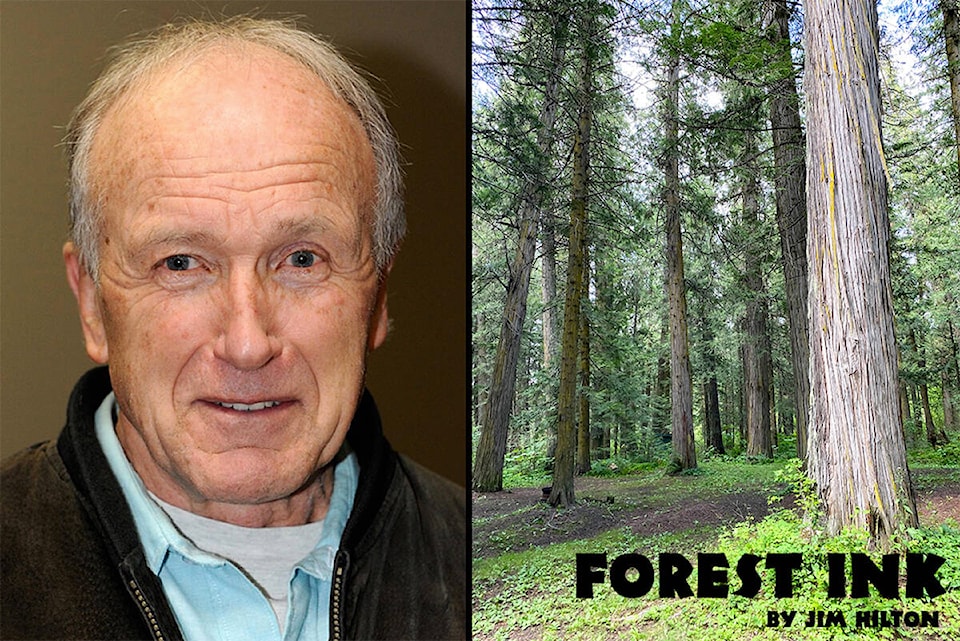While we may be still below the record fire year for Canada (4.1 million hectares in 2021) the scary part is how we are above the average of 2.5 million (close to the second highest 2.9 in 2017) hectares but this is early June which leaves lots of time to surpass the record.
According to natural resources Canada some additional facts are the following: Canada has about nine per cent of the world’s forests. Over the last 25 years, about 7,300 forest fires have occurred. The total area varies widely from year to year, but averages about 2.5 million hectares annually. Only three per cent of all wildland fires that start each year in Canada grow to more than 200 hectares in area. However, these fires account for 97 per cent of the total area burned across the country. Fire suppression costs over the last decade in Canada have ranged from about $800 million to $1.5 billion a year.
BC residents are well aware of serious fire years and fortunately some communities have been making their adjacent forests more fire resistant. In March of this year the results of this work is described in a report. “Efficacy of Fuels Mitigation Treatments in the Dry Forests of British Columbia, Final Report to British Columbia Ministry of Forests and Natural Resources Canada Climate Change Adaptation Program.” The report was produced by lead authors Lori Daniels and Gregory Green along with five other researchers from UBC. Local Ken Day and Robert Gray from Chilliwack were also involved.
As described in the introduction, the study demonstrated the efficacy of fuel mitigation treatments in the dry Douglas-fir dominated forests of south-central British Columbia. Proactive fuels reduction treatments are designed to reduce connectivity between the surface and canopy fuel strata to inhibit active or continuous crown fire. This is accomplished by thinning understory trees combined with chipping or pile burning of residues.
Field data was collected in pairs of treated and untreated (control) areas in four community forests: Williams Lake, Esk’etemc, Logan Lake, and Westbank First Nation.
The seventy-plus page report is not an easy read for people unfamiliar with wildfire behaviour computer models which were used to guide how much material was removed from the various treatments. Some of the report recommendations included the following:
Expand research to include an objective and systematic comparison of stand-level fire behaviour models for developing and implement fuels treatments aimed at reducing fire behaviour and increasing fire resilience. Also increase research and modelling on the efficacy and effectiveness of fuels mitigation treatments, including direct and indirect approaches.
Direct approaches include:
Mapping and compiling metadata for all past fuel mitigation treatments in B.C. to allow retrospective analysis of fuel treatments of different types and times since treatment across different ecosystems in B.C.
Remeasurement across a chronosequence and future monitoring would allow assessment of the duration of treatment effects and to anticipate and schedule maintenance treatments. (A chronosequence describes a set of ecological sites that share similar attributes but represent different ages. A common assumption in establishing chronosequences is that no other variable besides age has changed between sites of interest.)
Overlaying recent wildfires on mapped past treatments to identify locations to assess the effectiveness of fuels treatments.
Document fire suppression activities within and adjacent to locations where fire challenged treated forests. Continued refining of field measurements of fire severity and effects, in addition to forest structures and fuels.
After walking through some of the treated areas near our property any future wildfire should be much easier to control since the fire would be confined to the ground where it is cool and has little fuel to carry a fire. Time will tell how much effort it will take to maintain this low level of fuel. Controlled burning will likely be one of the tools used.
READ MORE: Officials warn of ‘very challenging’ fire season ahead in B.C.
READ MORE: Harrison-area wildfires holding steady as cooler weather arrives
Do you have a comment about this story? email:
editor@wltribune.com
Like us on Facebook and follow us on Twitter.
